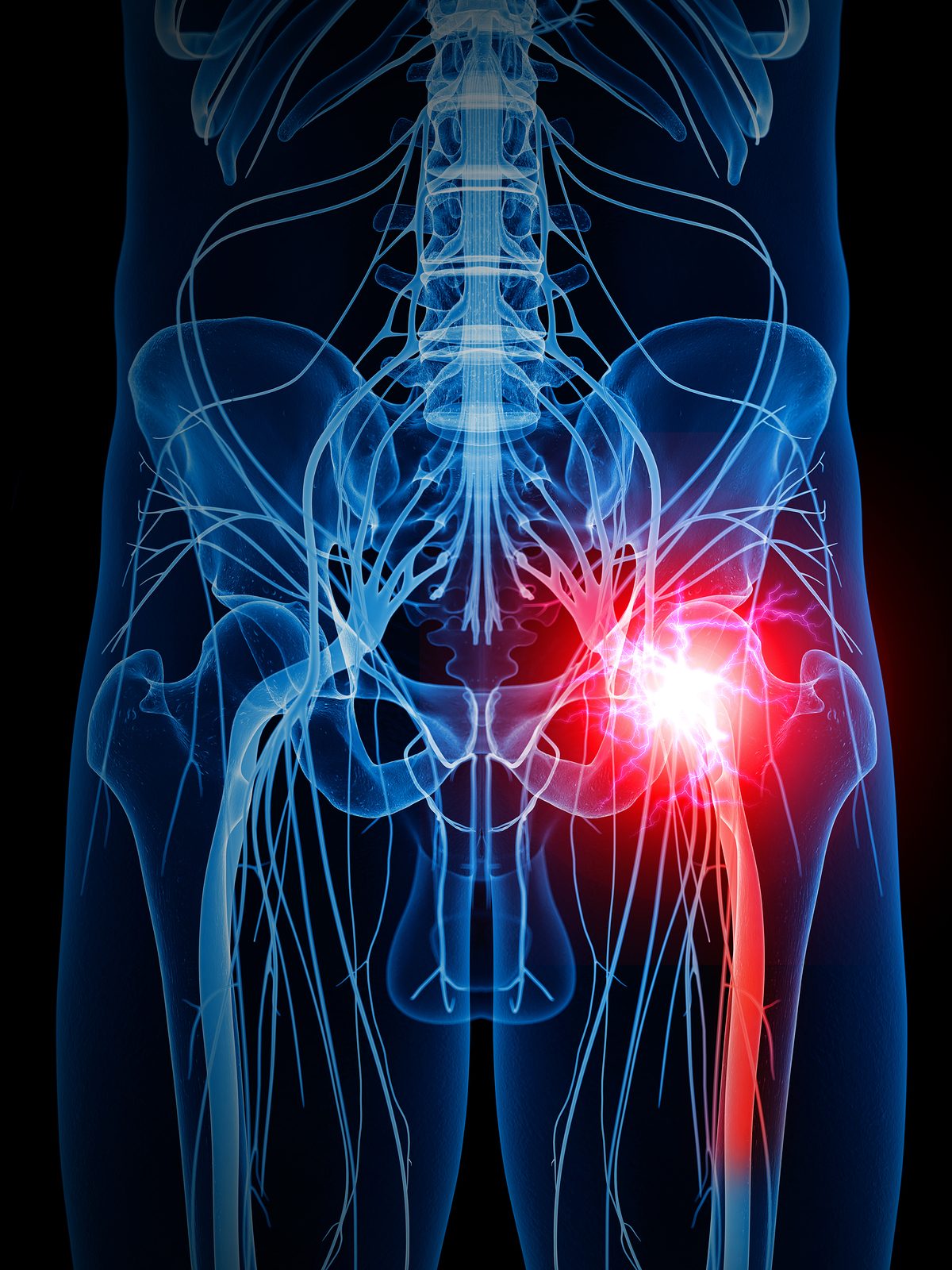SCIATICA

PHYSIOTHERAPY FOR SCIATICA
Sciatica is pain that starts in the lower back or buttocks and travels into one or both legs. Sciatic nerve pain often varies in intensity and frequency, but it normally feels like sharp, jabbing or pains radiating into the legs that feel like electric shocks. Sciatica pain is also commonly associated with burning, numbness and tingling sensations. Muscle weakness is another frequent symptom of sciatica that requires careful monitoring.
Sciatica is a common problem for manual workers, office workers and is particularly prevalent during pregnancy. Typically, sciatica is made worse by bending and lifting, but the good news is that it can be treated.
Organise your visit to Posturepro Physiotherapy’s clinic to speak with Principal Physiotherapist Julie Williams to find the appropriate treatment for your sciatica.
CAUSES OF SCIATICA
Sciatica nerve pain is caused by pressure on the sciatic nerve, which is a very large nerve originating from the lower lumbar spine and travels through the buttock into the leg. Pressure on the Sciatic nerve comes from compression forces in the spine.
The Psoas is the largest most powerful muscle that sits directly onto the spine, and it has the power to crush the joints and discs resulting in compression onto the spinal nerves which in turn become the Sciatic nerve. This powerful muscle is the prime muscle we assess and treat at Posturepro Physiotherapy Adelaide. By using the Soaz Method, exclusive to Posturepro, we can offer sciatica treatment that will ease your pain and help you to gain more movement.
Other pathologies that can affect the sciatic nerve include:
* piriformis syndrome (tightness of the piriformis muscle in the buttock that compresses the sciatic nerve)
* spinal misalignments, vertebral dysfunction
* herniated disc, disc prolapse
* osteoarthritis
* poor posture – wearing high heels, prolonged sitting, poor mattress
* poor lifting technique and poor bending habits
* spinal compressions due to osteoporosis
DIAGNOSIS OF SCIATICA
Since there are many disorders that can cause sciatica, your physiotherapist’s first task is to determine the exact cause of your sciatic nerve interference.
Physiotherapy treatment always begins with a thorough history, spinal, orthopaedic and neurological examination. Special diagnostic imaging investigations such as X-ray, CT, MRI can help to diagnose conditions and the team at Posturepro may require a scan to accurately diagnose and treat your sciatica.
TREATMENT OF SCIATICA
As sciatica is due to pressure on the sciatic nerve, it stands to reason that treatment involves removing this pressure. Your physiotherapy treatment at Posturepro aims to achieve this by reducing nerve pressure caused by poorly moving spinal joints as well as easing muscular tension in the lower spine, buttock and leg. This is achieved by using a combination of the following techniques:
* Spinal decompression (the Soaz Method)
* Massage therapy and trigger point therapy
* Stretching tight muscles, joints, tendons and ligaments
* Acupuncture and laser technology
* Advice in relation to how to minimise pressure and irritation of the sciatic nerve
In addition to this, you will be given a series of exercises to do at home to help aid your recovery.
If you are suffering with sciatica at the moment, don’t delay. You can achieve the best results when you address the symptoms early. Contact Posturepro Physiotherapy Adelaide today.
